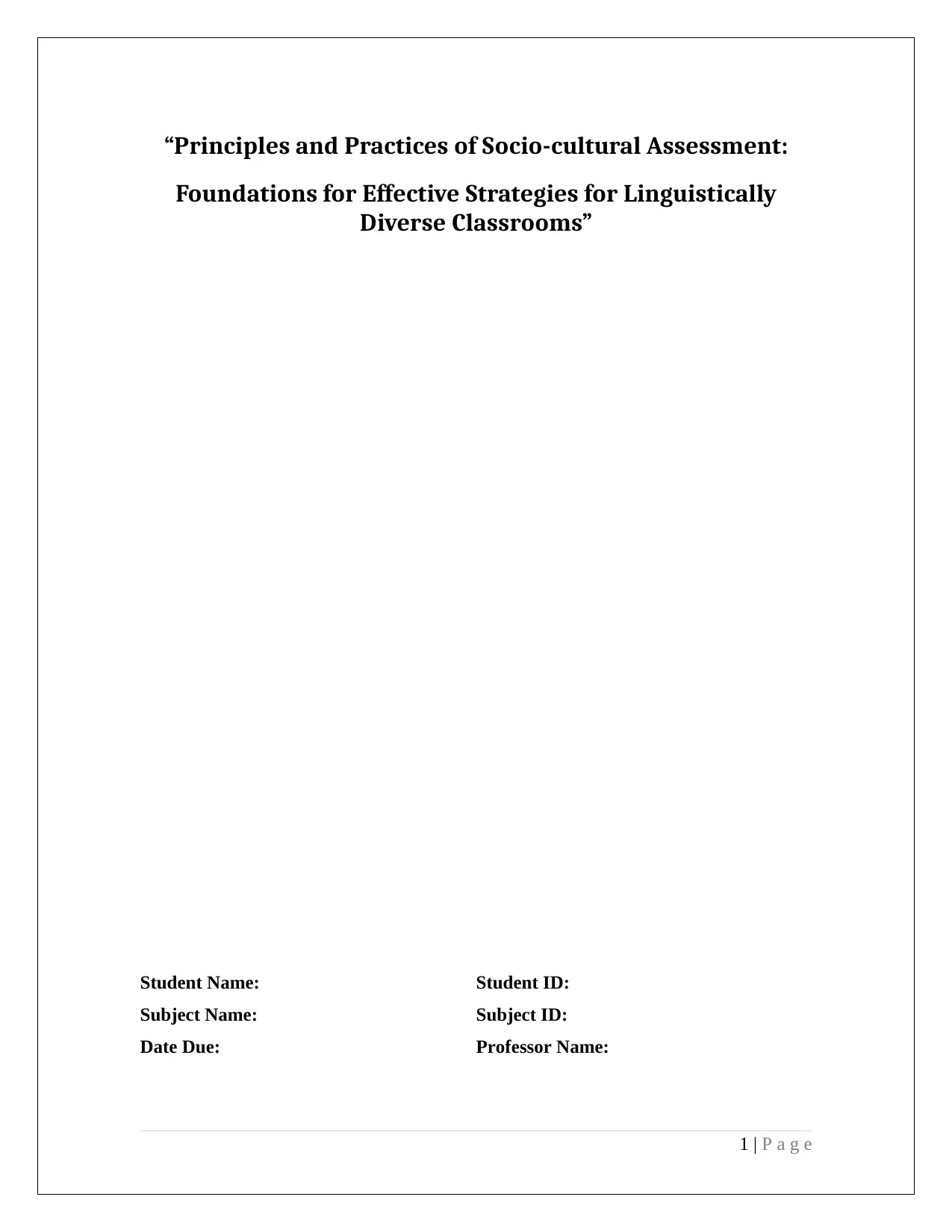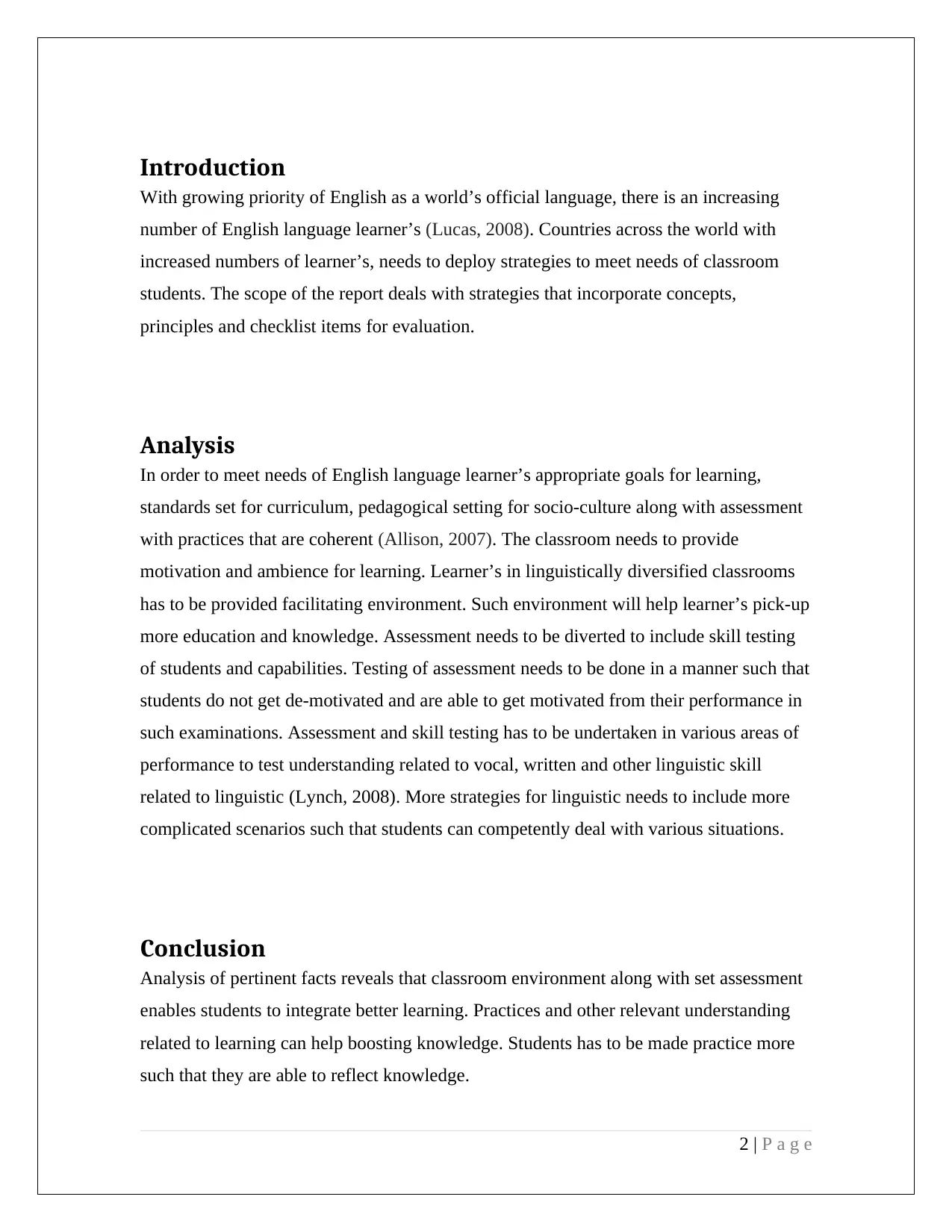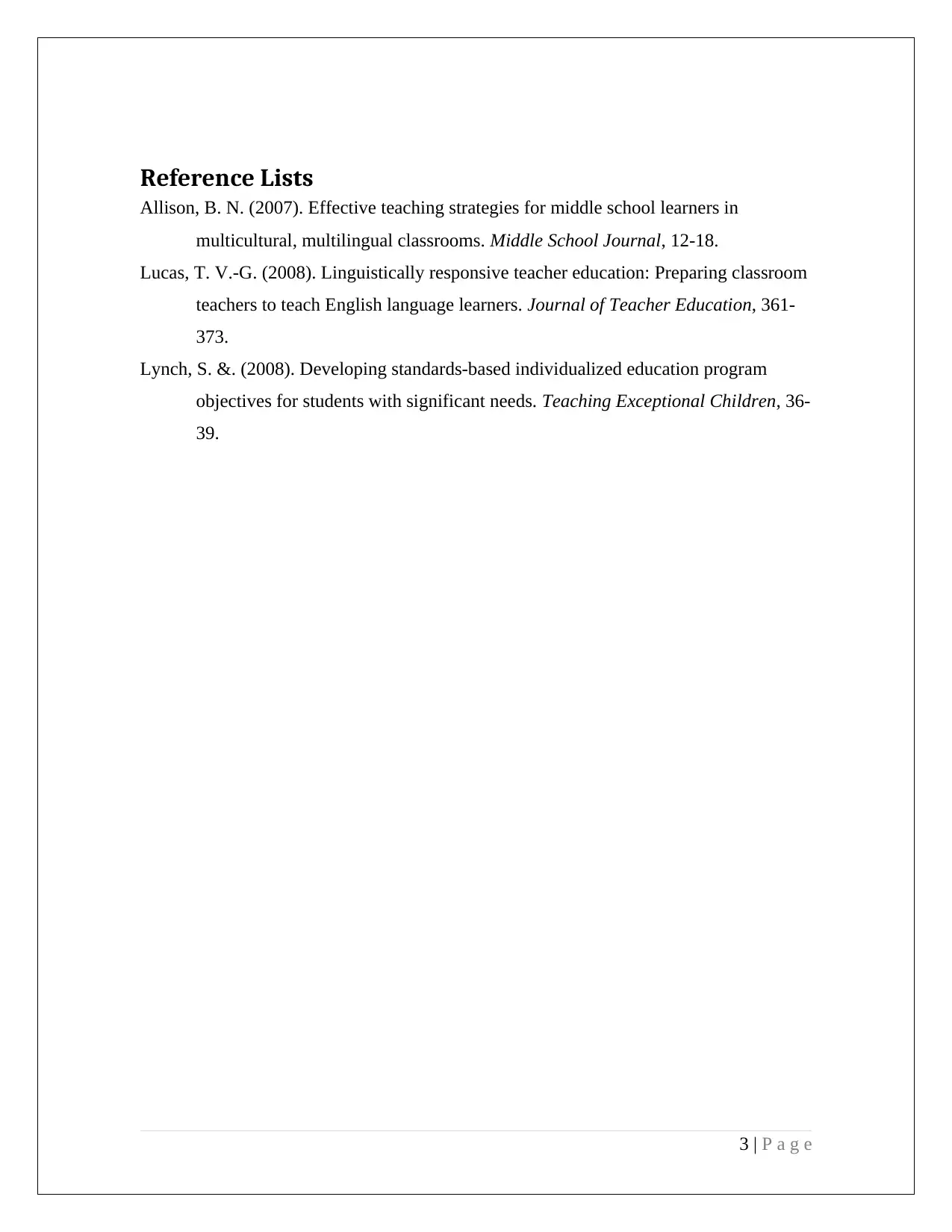Principles and Practices of Socio-cultural Assessment Report
VerifiedAdded on 2020/04/15
|3
|419
|87
Report
AI Summary
This report delves into the principles and practices of socio-cultural assessment within linguistically diverse classrooms. It emphasizes the importance of creating a supportive learning environment for English language learners. The report highlights the need for tailored assessment methods that consider students' linguistic backgrounds and provide motivation. It discusses strategies to integrate various assessment techniques, including those related to vocal, written, and other linguistic skills. The conclusion emphasizes the impact of a conducive classroom setting and effective assessment practices on student learning and knowledge retention. The report also references key literature in the field, underscoring the significance of these concepts and practices in contemporary education. The report highlights how the classroom environment and assessment methods should be modified to suit the needs of the students and their learning capabilities.
1 out of 3










![[object Object]](/_next/static/media/star-bottom.7253800d.svg)